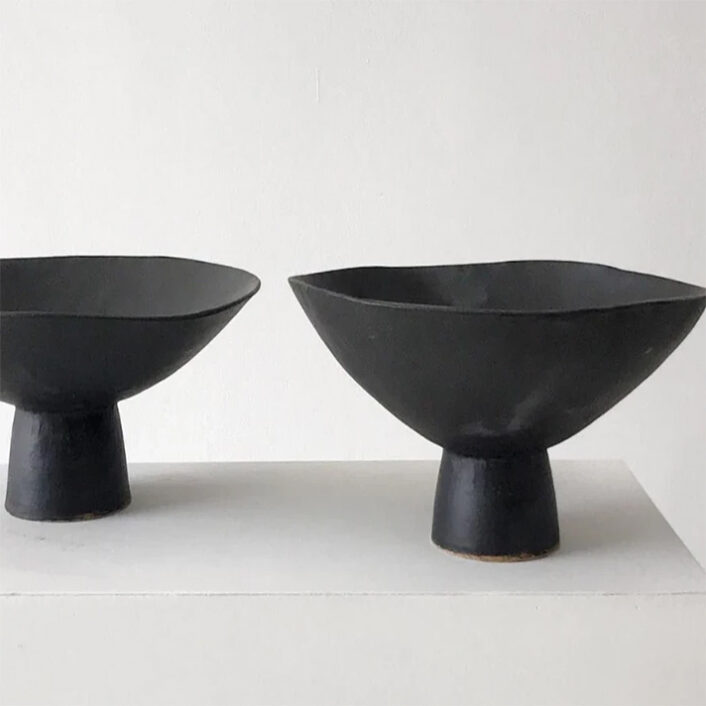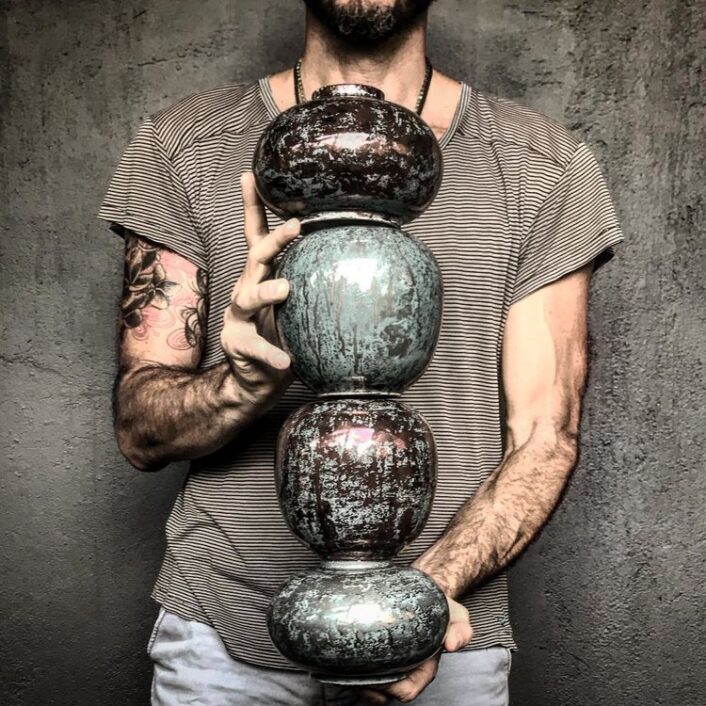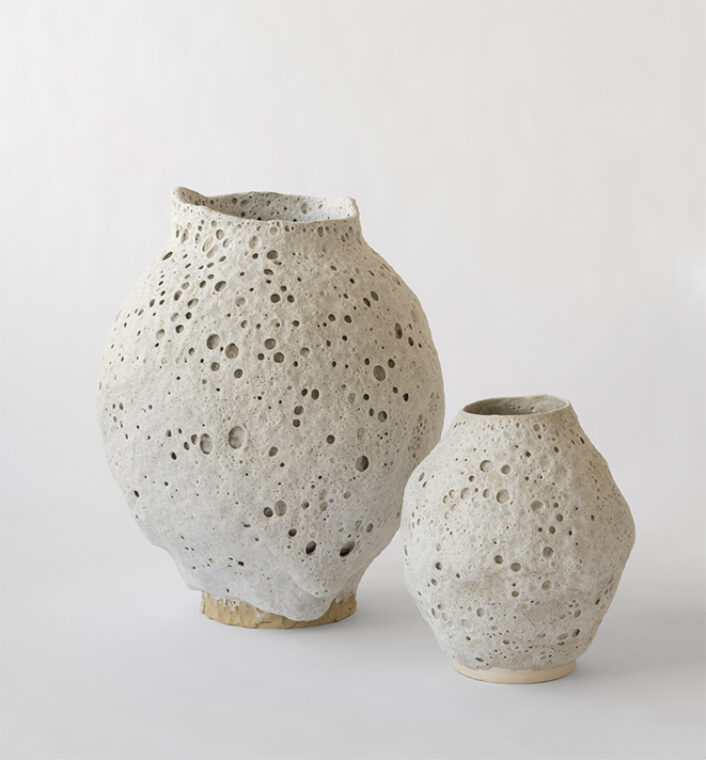Design
Raquel Vidal and Pedro Paz
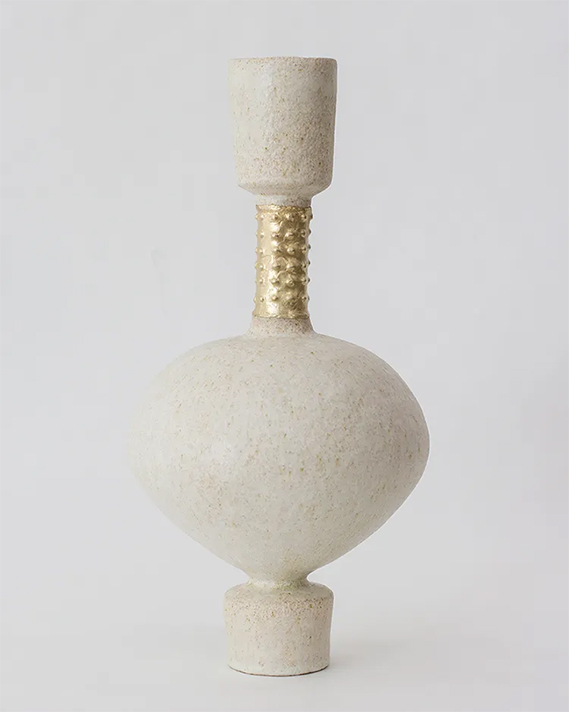
Canoa Lab’s Isolated n.14 vessel in stoneware and brass
Image courtesy of: Canoa Lab
For the past seven years, Raquel Vidal and Pedro Paz have been creating one-of-a-kind, handmade sculptures at their Valencia studio,. Partners in work and life, the pair designs objects of singular shapes with inspirations of ancient times.
The pair believes in taking their time with each piece; and in using local materials and techniques. With an extra focus on texture, color, and form… the end-product is reminiscent of pieces designed by the ancient societies of the Mediterranean, specifically Iberian, Roman, and Greek.
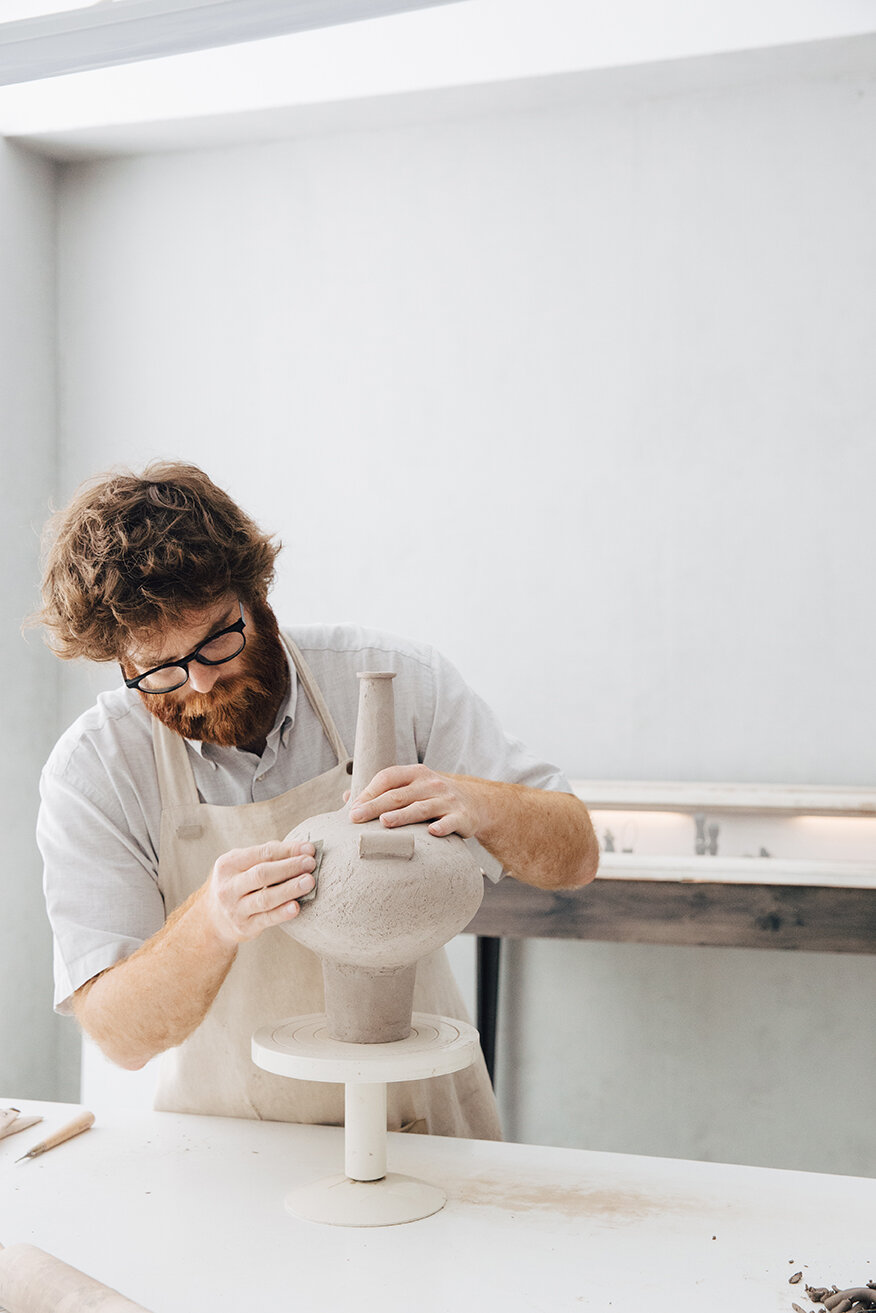
Paz at work for Canoa Lab in Valencia, Spain.
Image courtesy of: Ninu Nina
Paz did not actively pursue art until he visited Madrid’s fascinating museums. With a degree in Fine Art (Granada), he realized that he wanted to delve further into understanding the artistic process. It was while studying for his Master’s Degree in Artistic Production in Valencia that he met Vidal who was studying at the same program.
Growing up quite differently, Vidal grew up in an artistic family with a father who composed and played music and a mother who devoted her free time to the theater. Her paternal grandmother was a craftswoman who made dolls and painted in oils; Vidal would spend a lot of time with her at the studio which was a workroom under the stairs.
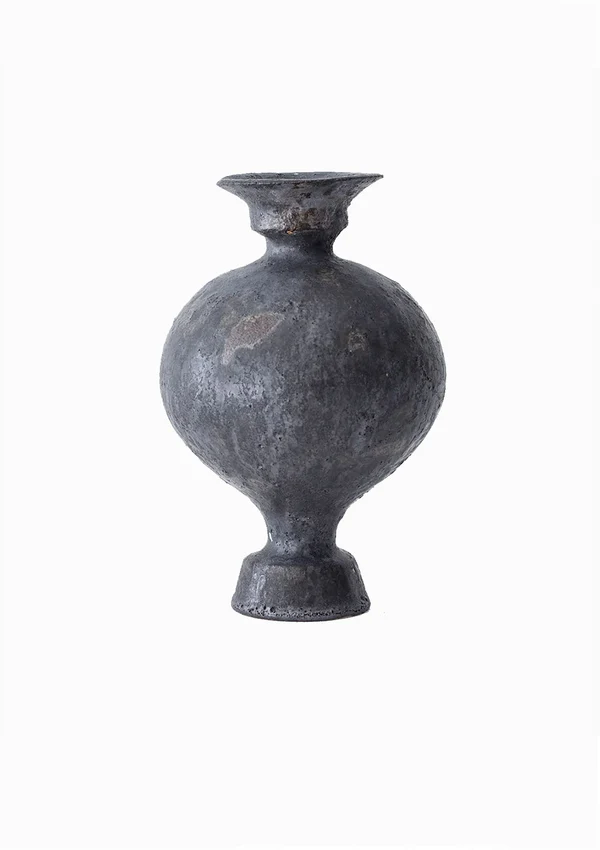
Lekytho Vase, made from glazed stoneware with grog from Manises, Spain and brushed with a mix of experimental glazes. The textured surface is what causes each piece to be unique.
Image courtesy of: Diani Boutique
For the talented pair, the segue into clay occurred quite naturally. Initially, Vidal and Paz worked in plastic production with image projects that were linked to photography, graphics, video, and art. Through different processes, they began adding clay and metal to their offerings. The materials became their “go to” choices because of the durability and the evidence of a long history in different societies.
Both ceramics and metal can delve into the past and look into the future; and both mediums require a slow production time which alludes to careful observation and introspection. Courtesy of Philia Review of Contemporary Design, Vidal and Paz explained “Experimentations with glazes, with natural beeswax and its subsequent casting process, experimentation with the shapes and hybridization of both materials and territories rich in processes which deserve to be observed and from which we obtain samples for our future study. This makes us feel like metal and clay archeologists.”
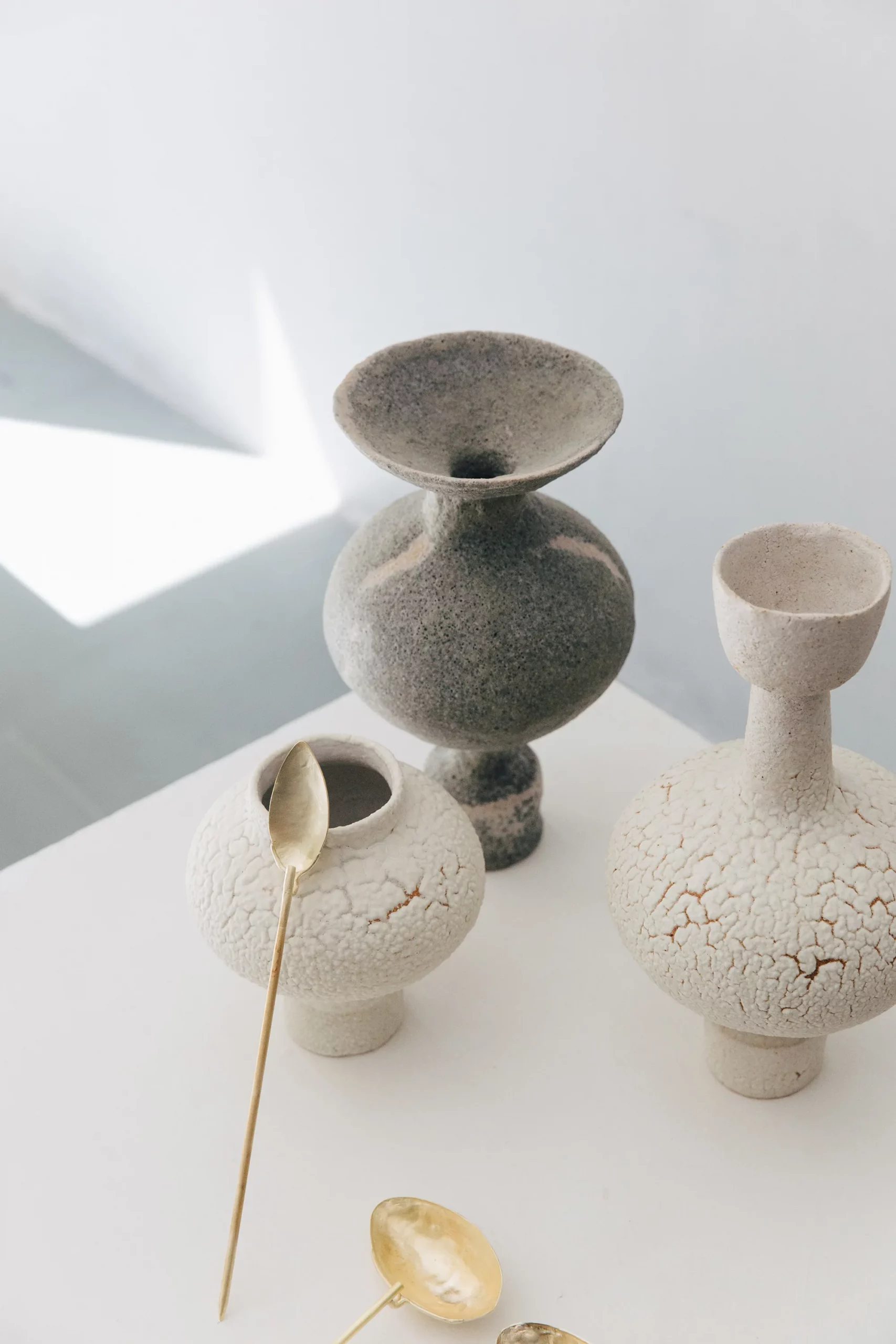
A sampling of three vessels.
Image courtesy of: Architectural Digest Spain, photographed by: Alicia Macias
Every single piece sees all four hands of the makers; although Vidal and Paz each have individual series they are also focused on (Vidal on the n.3 and Arq and Paz on Isolated). Regardless, both artists polish and are involved in other processes. Furthermore, Vidal develops the metal pieces and Paz is in charge of the glazing and anything to do with the kiln. Canoa Lab is indeed a well-oiled machine.
Making Valencia their “home base” was not coincidental… rather, it helped the pair stay closer to the tradition of poetry, classical shapes, the Mediterranean sea and light, and natural colors. Paz says about Valencia (courtesy of Volume Ceramics), “This city is some kind of “catalyst” of all the references that we find when we travel and all the research we do before designing a piece and allow us to create our own archive.”
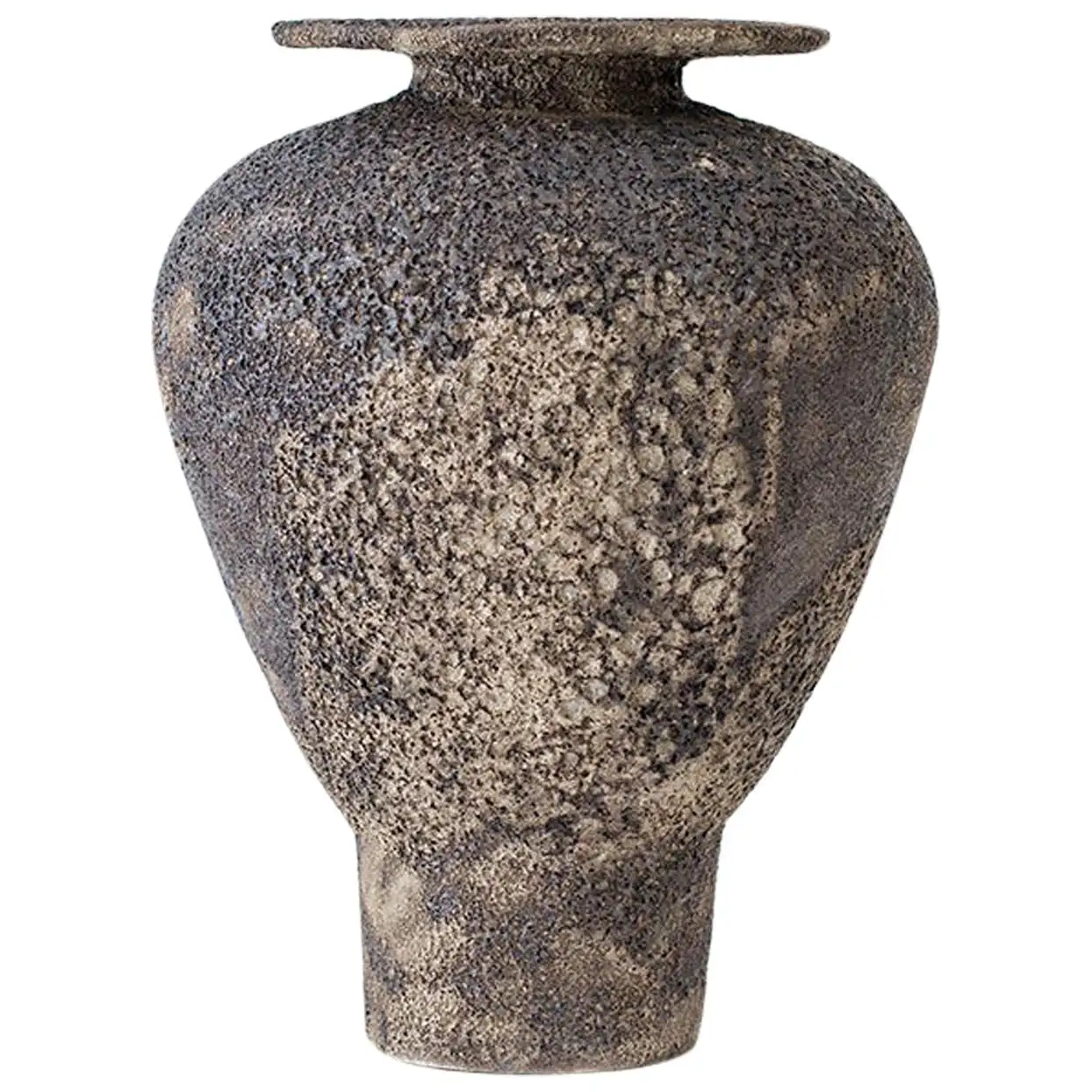
Image courtesy of: 1st Dibs
With a focus on historical and naturalistic character, Vidal and Paz “find the ancient forms and ancestral ways of production that really interest us throughout different times in history.” By continuing to educate themselves on primitive design, especially the period where makers used as few tools as possible, the duo is able to keep challenging themselves. Observing their surroundings remains paramount in finding inspiration… we could all take a lesson (or two) from this innovative Spanish pair!
